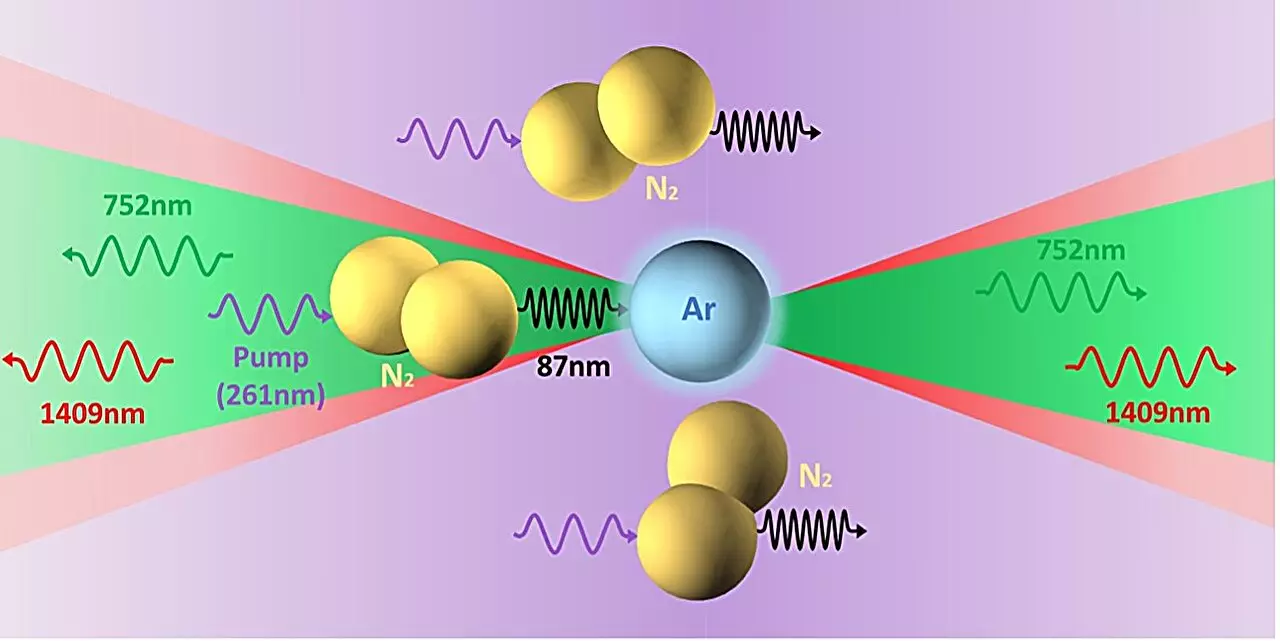Traditionally, lasers function as coherent light sources through the use of optical cavities, which consist of two mirrors facing each other to amplify light by reflecting it between them. While this method has been refined over decades, recent advancements indicate exciting alternatives, particularly the concept of cavity-free lasing in atmospheric environments. Remarkably, a collaborative effort from researchers at the University of California, Los Angeles (UCLA), along with the Max Born Institute, has shed light on the unique mechanisms facilitating this elusive phenomenon.
Groundbreaking Discoveries by UCLA and Max Born Institute
In a cutting-edge study published in *Physical Review Letters*, researchers have identified a mechanism that allows the generation of laser-like emissions without the necessity of traditional optical cavities. This phenomenon derives from the interaction between nitrogen (N2) and argon (Ar) molecules in the atmosphere. According to Chan Joshi, one of the researchers, their observations led them to detect an unexpected decrease in the ionization rates of argon compared to conventional predictive models, prompting further inquiry into the roles of photon processes within these interactions.
The team specifically observed that when a 261 nm pump laser was employed, argon atoms began exhibiting 3-photon resonant absorption. This absorption process is subsequently followed by a remarkable emission of cascaded superfluorescence — a vital mechanism that produces light in a bidirectional and laser-like manner without requiring a physical cavity.
As the research progressed, another compelling finding emerged: the cascaded superfluorescence from argon shifted wavelengths when mixed with air containing 1% argon. Zan Nie, the lead author of the study, indicated that this curious behavior led the team to explore the intricate energy transfer dynamics between nitrogen and argon molecules.
Through rigorous experimentation, the researchers determined that the behavior observed in mixtures with nitrogen closely resembled that found in ambient air. This provided critical evidence that nitrogen acts as a crucial partner in facilitating the observed laser-like behavior. Conversely, mixtures with other gases such as oxygen or helium did not yield similar results, further reinforcing their hypothesis of nitrogen-argon coupling being central to the phenomenon.
The team’s exploration revealed a previously unnamed mechanism whereby excited nitrogen molecules efficiently transfer energy to argon. This involves a nonlinear absorption process impacting argon at shifted frequencies relative to the nitrogen source. The intricate dynamics of these interactions create the groundwork for efficient cascaded lasing, thereby enabling not just forward emission but potential backward lasing — a significant objective within the physics community.
Misha Ivanov, another co-author of the paper, emphasized that realizing bidirectional lasing capabilities in atmospheric air offers profound implications for applications such as remote sensing technologies. The idea that one could project a laser into the air and receive a coherent burst of laser-like light in return fundamentally transforms our understanding of light generation in open spaces.
The revelations from this study pave the way for new avenues of investigation. The research team has set their sights on a deeper understanding of the underlying quantum mechanics driving these photon-mediated processes. Specifically, they aim to explore phenomena such as quantum beating, where the simultaneous excitation of multiple atomic levels results in oscillations in charge density. These nuanced oscillations can provide insights into not only the unseen energy levels of argon but also the vibrational-rotational states of nitrogen crucial to the energy transfer process.
This innovative inquiry represents a shift in how scientists view atmospheric laser emissions, moving beyond the confines of traditional methodologies towards new paradigms of light generation.
The breakthrough achieved by Joshi, Nie, Ivanov, and their fellow researchers marks a vital advance in the field of cavity-free lasing. As the mechanisms of photon-mediated energy transfer from nitrogen to argon are further explored, the potential applications for technology and science could indeed be revolutionary. This research not only broadens the scope of laser capabilities but also opens new frontiers for understanding light behavior in open air, heralding a new era in laser research and its applications.


Leave a Reply